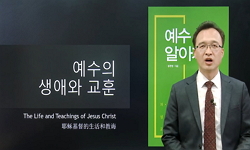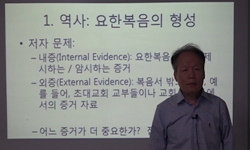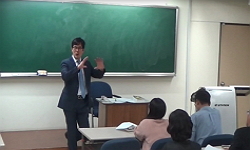References to Christianity can be found in Persian literature from the earliest period. Christian beliefs and institutions are frequently mentioned in various genres (lyric, epic, didactic, mystic), and many works contain allusions to legends of Chris...
http://chineseinput.net/에서 pinyin(병음)방식으로 중국어를 변환할 수 있습니다.
변환된 중국어를 복사하여 사용하시면 됩니다.
- 中文 을 입력하시려면 zhongwen을 입력하시고 space를누르시면됩니다.
- 北京 을 입력하시려면 beijing을 입력하시고 space를 누르시면 됩니다.
https://www.riss.kr/link?id=A100245721
- 저자
- 발행기관
- 학술지명
- 권호사항
-
발행연도
2012
-
작성언어
-
-
주제어
페르시아 문학 ; 예수 ; 예수의 숨결 ; 예수의 바늘 ; 예수의 당나귀 ; 십자가 ; 마리아의 실 ; Persian Literature ; Jesus ; Breath of Jesus ; Needle of Jesus ; Donkey of Jesus ; Cross of Jesus ; Mary`s thread
-
KDC
900
-
등재정보
KCI등재
-
자료형태
학술저널
-
수록면
1-24(24쪽)
-
KCI 피인용횟수
1
- 제공처
-
0
상세조회 -
0
다운로드
부가정보
다국어 초록 (Multilingual Abstract)
References to Christianity can be found in Persian literature from the earliest period. Christian beliefs and institutions are frequently mentioned in various genres (lyric, epic, didactic, mystic), and many works contain allusions to legends of Christian saints, martyrs, and ascetics. The terminology referring to Christianity in Persian prose and belles lettres falls into two categories: words and phrases that entered Persian from Arabic sources, mainly the Quran, religious literature, and pre-Islamic Christian Arab poetry, and those that appear to have entered as a result of contacts with Christian communities in Persia. Noteworthy examples of the first category are ebn Allah(son of God), Ruh-Allah, talet talata(third of the three), ruh al-qods or qodos(holy spirit), oqnum(person of the Trinity), enjil(Gospel), hawari(disciple), raheb(monk) and rohban(monks), qessis(priest), shammas(deacon), osqof(bishop), batriq(patriarch), jataliq(catholicos), salib(cross), zonnar(girdle), taylasan(pallium), deyr(monastery), soume`eh(cell), naqus(church bell), qandil(lamp), Fesh(Easter), and ta`mid or ma`mudiya (baptism). Some of these terms are loanwords that entered Arabic as a result of contacts with Christianity in pre-Islamic and early Islamic times. Persian or persianized forms in the second category are fewer, for example, Angeliun(Gospel), chalipa(cross), sokuba(bishop), kashish(priest), kelisa(church), yalda(Christmas). Some are of Syriac origin and must have entered Persian directly, rather than through Arabic. Also noteworthy is the large number of Persian literary expressions and compounds built on the names ``Isa(Jesus), Masih(Messiah), Maryam(Mary), and tarsa, for example, dam-e ``Isa(breath of Jesus), notq-e ``Isa(words of Jesus), morgh-e ``Isa(bird of Jesus), khom-e ``Isa(wine jar of Jesus), khar-e ``Isa(ass of Jesus), suzan-e ``Isa(needle of Jesus), Masiha-nafas(having breath like that of the Messiah), reshteh-ye Maryam(Mary`s thread), ruzeh-ye Maryam(Mary`s fasting), jameh-ye tarsa(garment of the Christians), deyr-e tarsa(monastery of the Christians), khatt-e tarsa(Greek writing). These expressions are generally noted in Persian dictionaries(cf. Aryan, 1960). Another sign of the lasting impact of Christianity on the culture and literature of Persia is the abundance of idioms and proverbs reflecting the experience of living beside Christians and the opinions of Muslim Persians about them. Some refer to the dam-e ``Isa, khom-e ``Isa, khar-e ``Isa, morgh-e ``Isa, notq-e ``Isa, or the ruh al-qods. At least sixty have been noted by Dehkoda, and even more are in vernacular use.
참고문헌 (Reference)
1 Rīāḥī, M. A., "케서 이 마르바지 - 그의 시와 사상" 1988
2 Rūmī, Moulavī, "정신적 이행시" 1925
3 Harman, Ömer Faruk, "이슬람 백과사전" 터키종교성 출판국 2000
4 Kazzāzī, Mīr Jalāl al-Dīn, "예수의 바늘 - 커거니의 기독교 시 해설" Enteshārāt-e Āydīn 2007
5 Rūmī, Moulavī, "大시집" 1957
6 Esposito, John, "The Oxford Dictionary of Islam" Oxford University Press 2003
7 "Shāʿerān-e kohan [Old poets]"
8 Soroudi, S., "On Jesus’ Image in Modern Persian Poetry" The Muslim World 1979
9 Bultmann A., "Jesus Christ and Mythology" 1958
10 Akdemir, Salih, "Hıristiyan Kaynaklara ve Kur'ān-ı Kerīme göre Hz. Īsā (기독교 자료와 코란에 따른 예수)" Ankara Üniversitesi Sosyal Bilimler Enstitüsü 1992
1 Rīāḥī, M. A., "케서 이 마르바지 - 그의 시와 사상" 1988
2 Rūmī, Moulavī, "정신적 이행시" 1925
3 Harman, Ömer Faruk, "이슬람 백과사전" 터키종교성 출판국 2000
4 Kazzāzī, Mīr Jalāl al-Dīn, "예수의 바늘 - 커거니의 기독교 시 해설" Enteshārāt-e Āydīn 2007
5 Rūmī, Moulavī, "大시집" 1957
6 Esposito, John, "The Oxford Dictionary of Islam" Oxford University Press 2003
7 "Shāʿerān-e kohan [Old poets]"
8 Soroudi, S., "On Jesus’ Image in Modern Persian Poetry" The Muslim World 1979
9 Bultmann A., "Jesus Christ and Mythology" 1958
10 Akdemir, Salih, "Hıristiyan Kaynaklara ve Kur'ān-ı Kerīme göre Hz. Īsā (기독교 자료와 코란에 따른 예수)" Ankara Üniversitesi Sosyal Bilimler Enstitüsü 1992
11 Rūmī, Moulavī, "Fīh mā fīh" 1984
12 "Dehkhodā, loghat-nāme(internet dictionary)"
13 Schimmel, Annemarie, "Christianity vii. Christian Influences in Persian Poetry"
14 Āryān, Qamar, "Christianity vi. in Persian Literature"
15 Asmussen, J. P., "Christianity in Iran, In Cambridge History of Iran, Vol. III-2" Cambridge University Press 1983
16 Rusell, James R., "Christianity i. In Pre-Islamic Persia: Literary Sources"
17 Armajani, Yahya., "Christian Missions in Persia"
18 Deedat, Ahmed, "Christ in Islam"
19 Russell, James R., "Bad Day at Burzēn Mihr. Notes on an Armenian Legend of St. Bartholomew, In Bazmavēp" 1986
20 Dehḵodā, ʿA, "Amthāl o ḥekam (속담과 격언), 4 vols" 1959
21 Price, Massoume, "A Brief History of Christianity in Iran"
동일학술지(권/호) 다른 논문
-
이란 민족주의와 이슬람 -이란 민족주의 발흥 과정에서 이슬람의 역할을 중심으로-
- 한국외국어대학교 중동연구소
- 장병옥 ( Byung Ock Chang )
- 2012
- KCI등재
-
- 한국외국어대학교 중동연구소
- 김석수 ( Suk Soo Kim )
- 2012
- KCI등재
-
- 한국외국어대학교 중동연구소
- 우덕찬 ( Duck Chan Woo )
- 2012
- KCI등재
-
- 한국외국어대학교 중동연구소
- 현승수 ( Seung Soo Hyun )
- 2012
- KCI등재
분석정보
인용정보 인용지수 설명보기
학술지 이력
| 연월일 | 이력구분 | 이력상세 | 등재구분 |
|---|---|---|---|
| 2028 | 평가예정 | 재인증평가 신청대상 (재인증) | |
| 2022-01-01 | 평가 | 등재학술지 유지 (재인증) |  |
| 2019-01-01 | 평가 | 등재학술지 유지 (계속평가) |  |
| 2016-01-01 | 평가 | 등재학술지 유지 (계속평가) |  |
| 2012-01-01 | 평가 | 등재학술지 유지 (등재유지) |  |
| 2009-01-01 | 평가 | 등재학술지 선정 (등재후보2차) |  |
| 2008-01-01 | 평가 | 등재후보 1차 PASS (등재후보1차) |  |
| 2007-01-01 | 평가 | 등재후보학술지 유지 (등재후보1차) |  |
| 2006-07-04 | 학술지명변경 | 한글명 : 중동 연구 -> 중동연구 |  |
| 2006-01-01 | 평가 | 등재후보학술지 유지 (등재후보1차) |  |
| 2004-07-01 | 평가 | 등재후보학술지 선정 (신규평가) |  |
학술지 인용정보
| 기준연도 | WOS-KCI 통합IF(2년) | KCIF(2년) | KCIF(3년) |
|---|---|---|---|
| 2016 | 0.34 | 0.34 | 0.3 |
| KCIF(4년) | KCIF(5년) | 중심성지수(3년) | 즉시성지수 |
| 0.25 | 0.24 | 0.792 | 0.18 |




 KCI
KCI KISS
KISS






